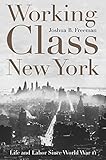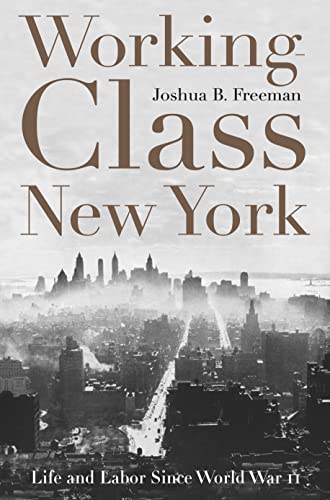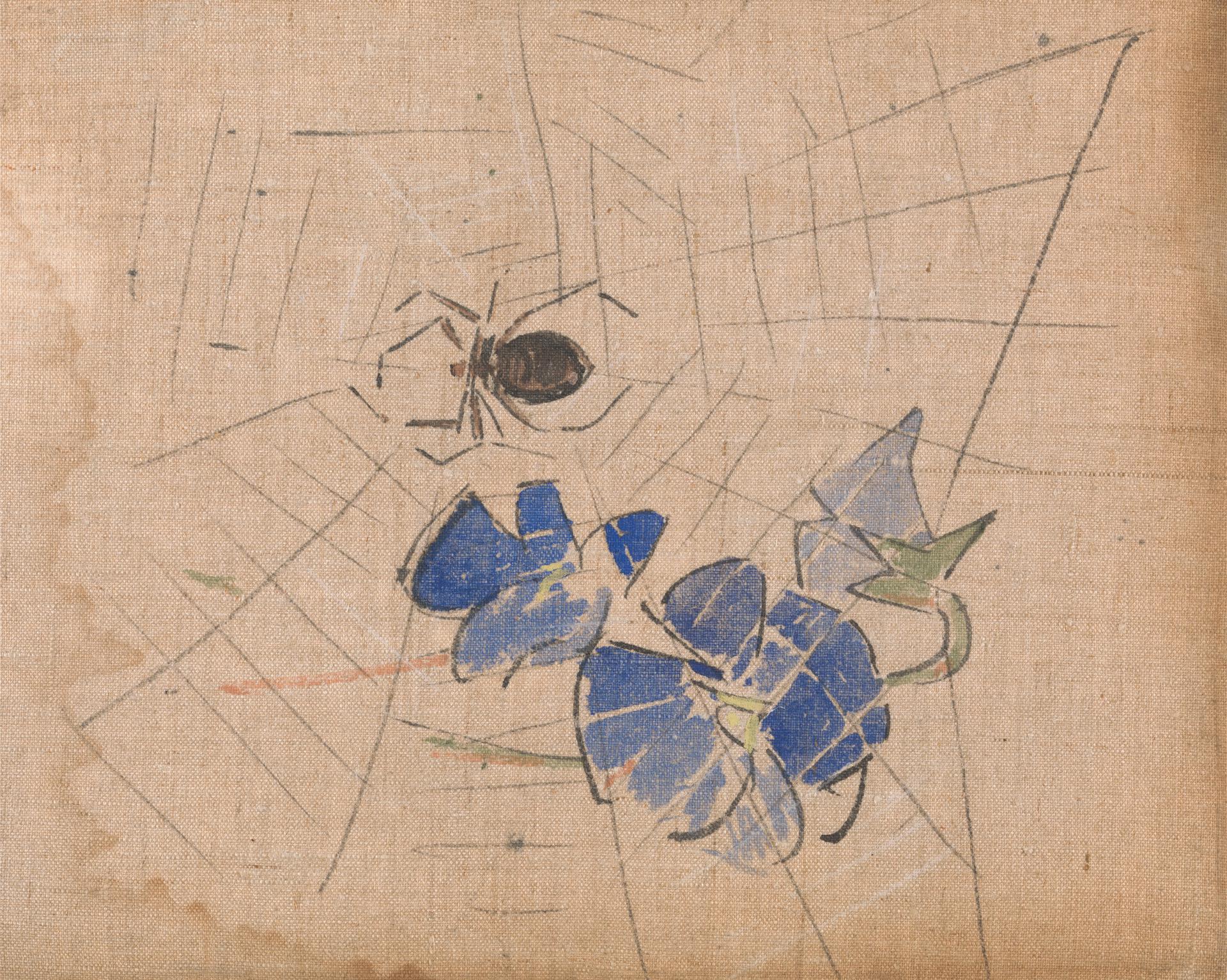 Chris Kraus’s After Kathy Acker gives readers a long-awaited account of the experimental writer as a living, breathing, fucking, and frequently, sick human being. Masterful in detail, drawing on deep archival sources and interviews, Kraus’s account grounds Acker’s project in the physical environments of late-20th-century New York, California, and London. Consider, for example, the beautiful sentences Kraus uses to open the book’s main action:
Chris Kraus’s After Kathy Acker gives readers a long-awaited account of the experimental writer as a living, breathing, fucking, and frequently, sick human being. Masterful in detail, drawing on deep archival sources and interviews, Kraus’s account grounds Acker’s project in the physical environments of late-20th-century New York, California, and London. Consider, for example, the beautiful sentences Kraus uses to open the book’s main action:
New York City, 1971:
The bed, rarely made, floats in a room painted orange with big violet stars.
She spends most of her days and nights in the bed, sleeping and writing. Her hair is cut short. Twice, unable to do anything with it, she shaves it off.
The inside of the closet is violet, matching the stars. The room could be anywhere, really, although in actual fact it’s on the sixth floor of a building in Washington Heights, upper Manhattan, straddling the corner of Broadway and 163rd Street. There are gates on the two skinny windows, facing north onto 163rd. Even in 1971, the old prewar building, with its large corniced lobby, had seen better days.
Moving through the shabby, abject places where Acker lived and worked, After Kathy Acker adds to a growing literature that examines the lives of bohemian writers of 1970s and 1980s New York and the relationship of these writers with the impoverished around them. Like Arthur Rimbaud and Charles Baudelaire in the previous century, and William Burroughs and Allen Ginsberg in earlier decades, these writers developed sympathies for their neighbors that drew on their lived proximity to such poverty. Acker lived close to the bone in the 1970s, alongside segments of the population rapidly being labeled an unproductive “underclass” responsible for the country’s economic and moral woes. In the early 1970s, Washington Heights was holding on, but barely. It was just across the river from the scene of the city’s worst urban destitution, the South Bronx, and residents knew what was coming. By the 1980s, the neighborhood would be overrun with crime.
Acker knew the spaces of poverty well, and these spaces animate her literary project. By detailing Acker’s lived life, Kraus offers new perspectives on the contours of Acker’s work, particularly as these relate to the welfare state that ameliorated poverty. One of the most prominent features of Washington Heights is the Columbia Presbyterian Medical Center. The center became important to Acker in 1971, when pelvic inflammatory disease drove her into its doors. In her unpublished journals, she recollects, “I walk into wooden hospital, emergency exit for Columbia Presbyterian hospital. Largest room wood walls puke yellow. Or rot yellow. […] In front of folding chairs, wood booths. I sit in chair. I hurt.” The scene is shocking and ordinary, disturbing and workaday. It is one of thousands that occurred in New York alone in the 1970s, especially as the municipal hospital system began to fall apart in the wake of the 1975 fiscal crisis.
 Kraus’s I Love Dick is well-known for blurring biography and fiction, and Kraus finds her own project in Acker, showing us how Acker’s project drew on her lived life. The hospital scene from Acker’s journals would resurface throughout her early fiction, appearing in some version in The Childlike Life of the Black Tarantula (1973), I Dreamt I Was a Nymphomaniac (1980), and Great Expectations (1980).
Kraus’s I Love Dick is well-known for blurring biography and fiction, and Kraus finds her own project in Acker, showing us how Acker’s project drew on her lived life. The hospital scene from Acker’s journals would resurface throughout her early fiction, appearing in some version in The Childlike Life of the Black Tarantula (1973), I Dreamt I Was a Nymphomaniac (1980), and Great Expectations (1980).  In Tarantula, for example, it becomes “woman vomits blood over floor, wood booths with tiny filthy white curtains for doctors’ rooms in front of wood chairs on wood floor filthy, doctor yells at one man you haven’t taken your medicine now you’re going to die of T.B. man is skeleton sit down not next to anyone we’ll call you man sits down next to me.” In Nymphomaniac: “Ahead of me I see an old guy sitting in a folding chair. Everyone’s screaming pain. A doctor standing next to a filthy curtain which swings from a wood frame says, “Mr. Smith”…Doctor walks in: I think she’s a nurse. She tells me she’s a doctor. I lay down, she sticks a silver thing into my cock. Each time she turns it, I hurt more. Everything becomes total pain. I’m screaming. Everyone in the examining room’s screaming. I tell the nurse to stop.” Acker’s characters have always suffered in exaggerated ways; she’s particularly fond of torture as a motif. Acker figures its contours carefully and slowly, preserving them through their repetition across her work. She brings the simple, terrible space of the emergency room to her larger project, documenting her lived encounter with an impersonal—but useful and helpful—system.
In Tarantula, for example, it becomes “woman vomits blood over floor, wood booths with tiny filthy white curtains for doctors’ rooms in front of wood chairs on wood floor filthy, doctor yells at one man you haven’t taken your medicine now you’re going to die of T.B. man is skeleton sit down not next to anyone we’ll call you man sits down next to me.” In Nymphomaniac: “Ahead of me I see an old guy sitting in a folding chair. Everyone’s screaming pain. A doctor standing next to a filthy curtain which swings from a wood frame says, “Mr. Smith”…Doctor walks in: I think she’s a nurse. She tells me she’s a doctor. I lay down, she sticks a silver thing into my cock. Each time she turns it, I hurt more. Everything becomes total pain. I’m screaming. Everyone in the examining room’s screaming. I tell the nurse to stop.” Acker’s characters have always suffered in exaggerated ways; she’s particularly fond of torture as a motif. Acker figures its contours carefully and slowly, preserving them through their repetition across her work. She brings the simple, terrible space of the emergency room to her larger project, documenting her lived encounter with an impersonal—but useful and helpful—system.
By this point in the national discussion of health care, this scene is familiar: Woman without insurance gets deathly ill and goes to the emergency room or, today, urgent care. What happens next is also familiar: Acker writes in her journal, “Doctor won’t see me until I pay for last visit & this visit. I hate being yelled at. Otherwise I wouldn’t have paid.” To pay, she found work doing sex shows but had to take pain pills during them to “walk without screaming.” This scene became part of Acker’s literary project. Kraus uses it as an example of what she calls “the strength, and also the weakness” of Acker’s writing: Acker’s tendency to rewrite memories until “they became conduits to something a-personal, until they became myth.” In this case, Kraus meant that “in book after book, Acker would describe the cycle of despair of doing sex work to buy medicine so she could keep on doing sex work,” adding, somewhat cynically, that Acker “[crafted] these months of her life into something more allegorical than her actual life on West 163rd Street.” The weakness of this account is that the episode is limited; the strength of this account is that it becomes impossible to ignore after it appears for the third time.
Part of that allegory told a story about institutions like Columbia Presbyterian. Acker’s work, up to and including her death from cancer in 1997, has sometimes been read as a wide attack on the institutions that dominate the private lives of individuals. Acker was associated with a wide body of anti-institutional critical theory, particularly that of Gilles Deleuze, Félix Guattari, and Michel Foucault. Kraus doesn’t indicate whether Acker attended the 1975 Schizo Culture conference run by Sylvère Lotringer, at which all three men spoke. But certainly, by 1977, Acker was published alongside these men in the issue of Semiotext(e) based on the conference. The Schizo Culture conference might be called the birth of the academic left’s long critique of the welfare state, at least in the United States. In the conference proceedings, one finds early examples of the Foucauldian critique that dominated the U.S. academy in the 1980s and 1990s. This critique often took as its target the welfare state that expanded in the 1950s and 1960s, part of what has been called the Fordist compact between government, industry, and unions. At a local level, New York hospitals had aggressively expanded their mission and physical footprint during this time, increasing in particular their mental health services. It’s doubtless true that this expansion meant more surveillance and control over the poor in particular.
 But there’s another way to view all this: Even as she evolved this memory into a critique of the medical system, Acker was showing how it worked, especially in New York, for impoverished Americans, while also showing the dire consequences of its limitations. She’s immersed in that waiting room; her journals take care to observe not just the color of the walls but the way doctors are behaving toward other patients, the way everything seems in need of repair, the way everyone has to sit for hours in pain. In this respect, those years at 163rd Street seem to have marked Acker in ways other than myth, as manifested by passages like this one from Blood and Guts in High School: “Most people are what they sense and if all you see day after day is a mat on the floor that belongs to the rats and four walls with tiny piles of plaster at the bottom, and all you eat is starch, and all you hear is continuous noise, and all you eat is starch, and all you hear is continuous noise, you smell garbage and piss which drips through the walls continually, and all the people you know live like you, it’s not horrible, it’s just…” Yes, the poor are part of the myth: Acker often used the poor to signal her protagonists’ abjection and position outside of power. But Acker was also not the only one deploying the poor as part of a myth. As the historian Michael Katz emphasizes, the image of the “undeserving poor”—whether as represented by “urban crisis” or “underclass,” forms a key part of those discourses aimed toward destroying the welfare state, a narrative whereby welfare is blamed for “economic stagnation and social decay.” Such discourses emerged during the Nixon administration and operate with equal vigor through Paul Ryan and Donald Trump.
But there’s another way to view all this: Even as she evolved this memory into a critique of the medical system, Acker was showing how it worked, especially in New York, for impoverished Americans, while also showing the dire consequences of its limitations. She’s immersed in that waiting room; her journals take care to observe not just the color of the walls but the way doctors are behaving toward other patients, the way everything seems in need of repair, the way everyone has to sit for hours in pain. In this respect, those years at 163rd Street seem to have marked Acker in ways other than myth, as manifested by passages like this one from Blood and Guts in High School: “Most people are what they sense and if all you see day after day is a mat on the floor that belongs to the rats and four walls with tiny piles of plaster at the bottom, and all you eat is starch, and all you hear is continuous noise, and all you eat is starch, and all you hear is continuous noise, you smell garbage and piss which drips through the walls continually, and all the people you know live like you, it’s not horrible, it’s just…” Yes, the poor are part of the myth: Acker often used the poor to signal her protagonists’ abjection and position outside of power. But Acker was also not the only one deploying the poor as part of a myth. As the historian Michael Katz emphasizes, the image of the “undeserving poor”—whether as represented by “urban crisis” or “underclass,” forms a key part of those discourses aimed toward destroying the welfare state, a narrative whereby welfare is blamed for “economic stagnation and social decay.” Such discourses emerged during the Nixon administration and operate with equal vigor through Paul Ryan and Donald Trump.

 These privatizing discourses were everywhere in the 1970s but took some time to solidify as a target of leftist critique, a problem shaped by everything from the legacy of McCarthyism to the rise of identity politics. Arguably, the rise of French theory in the academy didn’t help. As the moment of “high theory” has faded in the academy, such discourses have begun to be reassessed. In this context, critics such as Bruce Robbins have begun describing the irony of institutional critique in the post-Fordist moment of the welfare state’s decline. In Upward Mobility and the Common Good, Robbins argues that while the welfare state was an “imperfect historical form,” it nevertheless represents “a defensible common program in which the glaringly different interests of the poor and needy, on the one hand, and elite experts, on the other…appear to be resolved.” In the context of privatization, Robbins argues, “the persistence of the Foucaultian school in interpreting the welfare state as an apparatus of domination” has come to seem, at best, open for debate. Acker may have allied herself with that Foucaultian school, especially in Empire of the Senseless and other late works, which depict hospitals and prisons as part of a Burroughsian nightmare. In that 1971 emergency room, though, Acker isn’t concerned with being surveilled: She wants conditions to improve, both for both herself and for the elderly man with tuberculosis waiting alongside her.
These privatizing discourses were everywhere in the 1970s but took some time to solidify as a target of leftist critique, a problem shaped by everything from the legacy of McCarthyism to the rise of identity politics. Arguably, the rise of French theory in the academy didn’t help. As the moment of “high theory” has faded in the academy, such discourses have begun to be reassessed. In this context, critics such as Bruce Robbins have begun describing the irony of institutional critique in the post-Fordist moment of the welfare state’s decline. In Upward Mobility and the Common Good, Robbins argues that while the welfare state was an “imperfect historical form,” it nevertheless represents “a defensible common program in which the glaringly different interests of the poor and needy, on the one hand, and elite experts, on the other…appear to be resolved.” In the context of privatization, Robbins argues, “the persistence of the Foucaultian school in interpreting the welfare state as an apparatus of domination” has come to seem, at best, open for debate. Acker may have allied herself with that Foucaultian school, especially in Empire of the Senseless and other late works, which depict hospitals and prisons as part of a Burroughsian nightmare. In that 1971 emergency room, though, Acker isn’t concerned with being surveilled: She wants conditions to improve, both for both herself and for the elderly man with tuberculosis waiting alongside her.
 As Joshua Freeman describes in Working-Class New York, the system that Acker encountered in 1971, however imperfect, was pretty good. Elsewhere in the country, the postwar medical system was compromised from the beginning. Labor had to fight not only doctors, hospitals, and insurers but often the government as well. New York, though, had two things going for it: a dense concentration of unionized workers and independent-minded doctors. Combined, these produced in the postwar years what Freeman calls “an exceptional health care delivery system.” As Freeman quickly adds, though, that system came under pressure in the late 1960s. By 1971, The New York Times editorial board was warning its readers of the impossibility of providing quality health care to all Americans in the wake of a threatened strike and the establishment of the Health and Hospitals Corporation, an organization that quickly moved to demand a 5 percent cut in hospitals citywide. After the city’s 1975 fiscal crisis, cuts were made even more widely.
As Joshua Freeman describes in Working-Class New York, the system that Acker encountered in 1971, however imperfect, was pretty good. Elsewhere in the country, the postwar medical system was compromised from the beginning. Labor had to fight not only doctors, hospitals, and insurers but often the government as well. New York, though, had two things going for it: a dense concentration of unionized workers and independent-minded doctors. Combined, these produced in the postwar years what Freeman calls “an exceptional health care delivery system.” As Freeman quickly adds, though, that system came under pressure in the late 1960s. By 1971, The New York Times editorial board was warning its readers of the impossibility of providing quality health care to all Americans in the wake of a threatened strike and the establishment of the Health and Hospitals Corporation, an organization that quickly moved to demand a 5 percent cut in hospitals citywide. After the city’s 1975 fiscal crisis, cuts were made even more widely.
Reflecting on a letter Acker wrote to Ron Silliman about New York’s 1975 fiscal crisis, Kraus describes “welfare, unemployment insurance, and disability SSI” as “de facto grants that funded most of New York’s off-the-grid artistic enterprises.” In the 1970s, writers and artists like Acker needed the welfare state. I don’t say this to point out Acker’s hypocrisy, as if Acker were Ayn Rand requiring Social Security in her dotage. I instead mean to point out that a desire for more care, not less care, has been present in Acker’s work from the beginning. In the midst of the welfare state’s breakdown in the 1970s, Acker in Nymphomaniac showed her readers how the “poor who can have no lovers, who long to die” deserved better than a hospital that “was the worst hell I had ever been in.” Certainly, they deserve better than, as Acker describes in her journals, a choice between going without medical care and doing sex work while taking pain medication “so that I can walk.”
The health care system haunts After Kathy Acker. It can’t help doing so: Acker’s 1997 death was, in part, a consequence of her refusal of chemotherapy, a refusal that Acker herself attributed to the high costs of getting care without health insurance. In other words, while Acker’s refusal is sometimes attributed to her career-long critique of the biopolitical control of health care, it’s equally the case that Acker simply lacked access to health care. Had the Affordable Care Act been in effect in 1996, there’s some likelihood that Acker, as a visiting professor at the San Francisco Art Institute, would have been at the very center of the policy: an independent contractor, one of the “many self-employed people in San Francisco” who “bought their own coverage,” as Kraus suggests Acker might have done without subsidies (and a $260,000 trust to her name). But in following the idiosyncratic Acker through spaces of poverty, Kraus has already made the case for a different world, one in which the self-employed, like the impoverished, find quality service that doesn’t turn dystopian. That world became more possible with the Affordable Care Act, legislation that Acker the writer might have hated but that Acker the cancer patient might have used.
Image: Columbia University Medical Center















